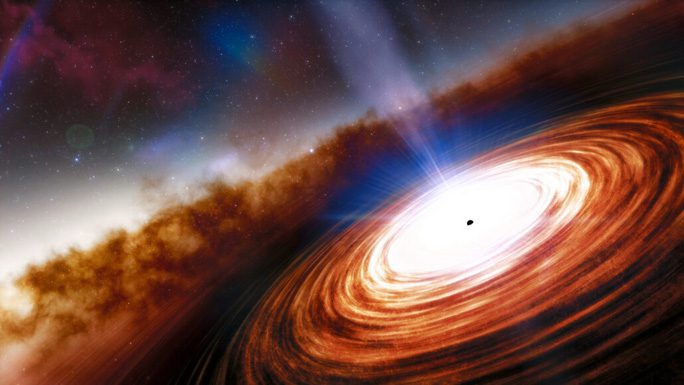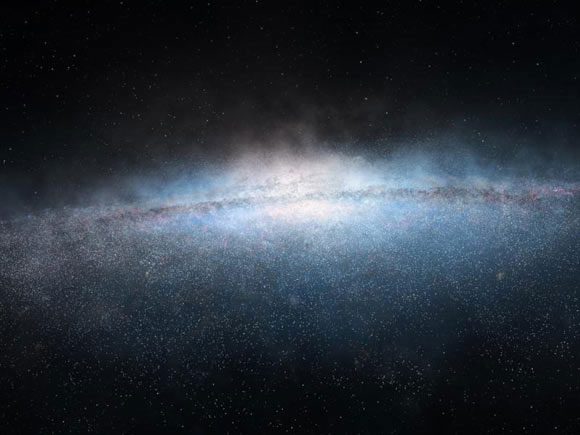Scientists have discovered a black hole weighing 1.6 billion times that of the Sun, located at the center of a galaxy over 13 billion light-years away from Earth.
According to Science News on February 18, the black hole is named J0313-1806, formed when the universe was just 670 million years old. Its “age” is over 20 million years older than the oldest known black hole.
The discovery of such a massive black hole is considered a breakthrough for modern astronomy. This finding was announced on January 12 during an online meeting of the American Astronomical Society (AAS) and was published on arXiv.org on January 8.

Illustrative image. Photo: NOIRLAB
Supermassive black holes are believed to evolve from smaller black holes. However, astronomer Feige Wang from the University of Arizona suggests that J0313-1806 must have formed with a mass of 10,000 solar masses to develop into the “supermassive” black hole it is today. In contrast, stars that explode only create black holes weighing a few thousand times that of the Sun.
In another development, astronomers have utilized supercomputers to reconstruct an ancient dwarf galaxy. According to Sci-News on February 18, they calculated the initial mass and size of a dwarf galaxy that was disrupted after colliding with the galaxy containing our Solar System billions of years ago.
To date, scientists have identified over 10 dwarf galaxies orbiting around our galaxy.

Astronomers have used supercomputers to reconstruct an ancient dwarf galaxy. (Photo: Sci-News)
In 2006, two independent teams of astronomers discovered a new stream of stars while examining the Sagittarius constellation. This was the result of “tidal disruption” from the same dwarf galaxy.
Astronomers estimate the total mass of the aforementioned dwarf galaxy to be around 2×107 times that of the Sun. However, only about 1% of that mass is composed of ordinary matter similar to stars.
This new research has been published in the Astrophysical Journal.





















































